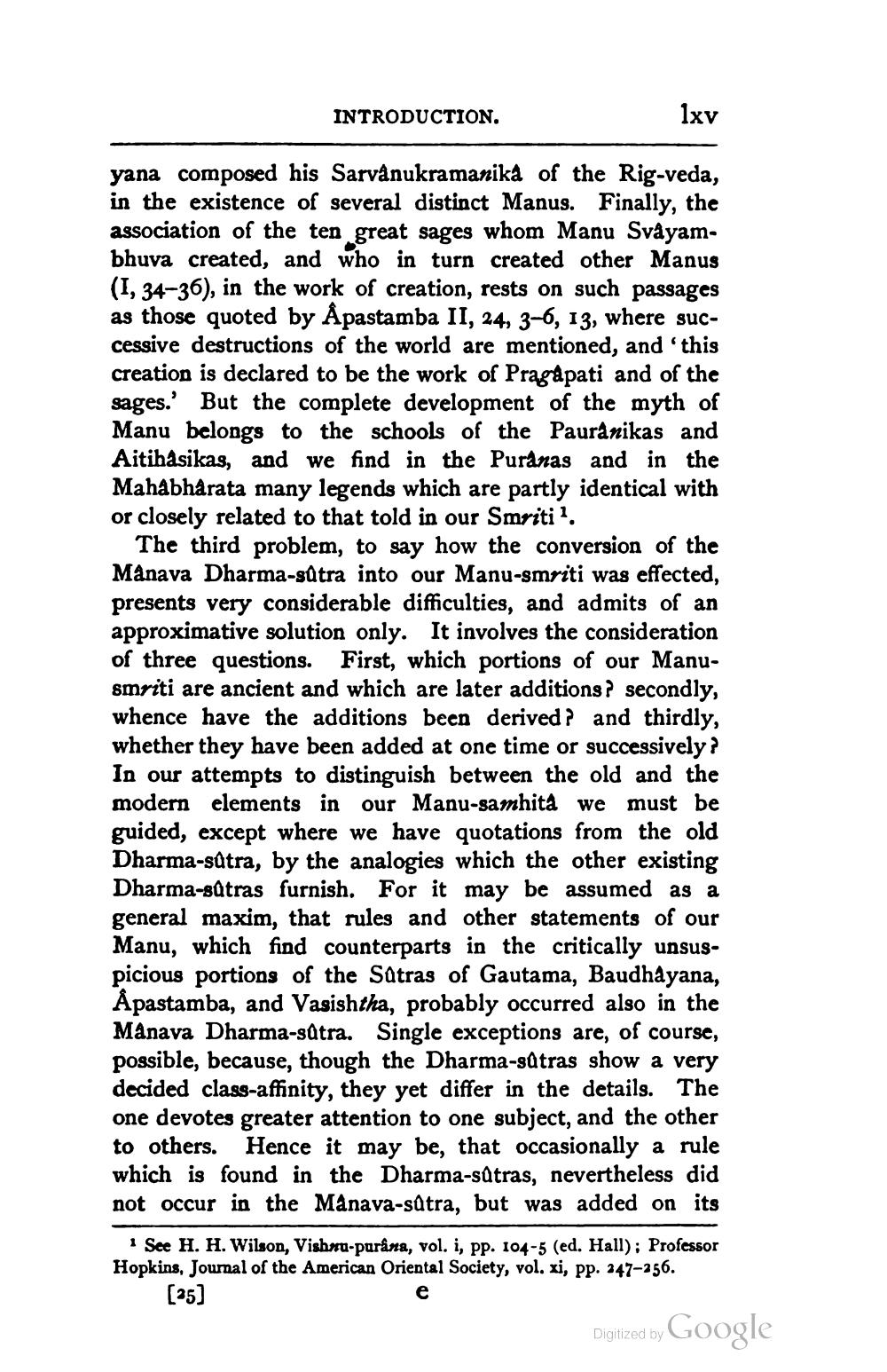________________
1xv
yana composed his Sarvânukramanika of the Rig-veda, in the existence of several distinct Manus. Finally, the association of the ten great sages whom Manu Svâyambhuva created, and who in turn created other Manus (I, 34-36), in the work of creation, rests on such passages as those quoted by Âpastamba II, 24, 3-6, 13, where successive destructions of the world are mentioned, and 'this creation is declared to be the work of Pragapati and of the sages.' But the complete development of the myth of Manu belongs to the schools of the Paurânikas and Aitihasikas, and we find in the Puranas and in the Mahabharata many legends which are partly identical with or closely related to that told in our Smriti1.
INTRODUCTION.
The third problem, to say how the conversion of the Mânava Dharma-sûtra into our Manu-smriti was effected, presents very considerable difficulties, and admits of an approximative solution only. It involves the consideration of three questions. First, which portions of our Manusmriti are ancient and which are later additions? secondly, whence have the additions been derived? and thirdly, whether they have been added at one time or successively? In our attempts to distinguish between the old and the modern elements in our Manu-samhita we must be guided, except where we have quotations from the old Dharma-sûtra, by the analogies which the other existing Dharma-sûtras furnish. For it may be assumed as a general maxim, that rules and other statements of our Manu, which find counterparts in the critically unsuspicious portions of the Sûtras of Gautama, Baudhayana, Åpastamba, and Vasishtha, probably occurred also in the Mânava Dharma-sûtra. Single exceptions are, of course, possible, because, though the Dharma-sûtras show a very decided class-affinity, they yet differ in the details. The one devotes greater attention to one subject, and the other to others. Hence it may be, that occasionally a rule which is found in the Dharma-sûtras, nevertheless did not occur in the Mânava-sûtra, but was added on its
1 See H. H. Wilson, Vishnu-purâna, vol. i, pp. 104-5 (ed. Hall); Professor Hopkins, Journal of the American Oriental Society, vol. xi, pp. 247-256.
[25]
Digitized by Google




